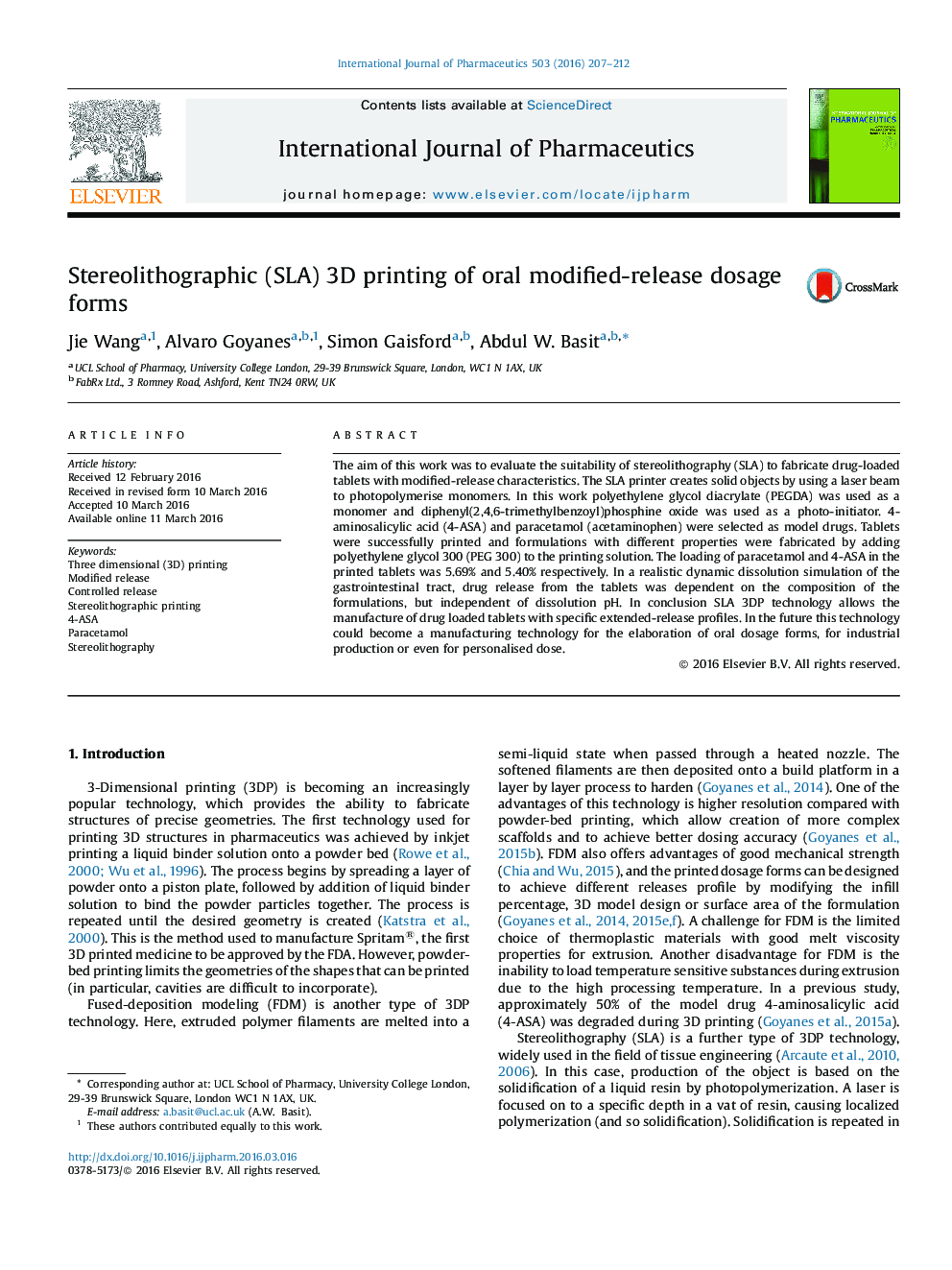| Article ID | Journal | Published Year | Pages | File Type |
|---|---|---|---|---|
| 2500945 | International Journal of Pharmaceutics | 2016 | 6 Pages |
The aim of this work was to evaluate the suitability of stereolithography (SLA) to fabricate drug-loaded tablets with modified-release characteristics. The SLA printer creates solid objects by using a laser beam to photopolymerise monomers. In this work polyethylene glycol diacrylate (PEGDA) was used as a monomer and diphenyl(2,4,6-trimethylbenzoyl)phosphine oxide was used as a photo-initiator. 4-aminosalicylic acid (4-ASA) and paracetamol (acetaminophen) were selected as model drugs. Tablets were successfully printed and formulations with different properties were fabricated by adding polyethylene glycol 300 (PEG 300) to the printing solution. The loading of paracetamol and 4-ASA in the printed tablets was 5.69% and 5.40% respectively. In a realistic dynamic dissolution simulation of the gastrointestinal tract, drug release from the tablets was dependent on the composition of the formulations, but independent of dissolution pH. In conclusion SLA 3DP technology allows the manufacture of drug loaded tablets with specific extended-release profiles. In the future this technology could become a manufacturing technology for the elaboration of oral dosage forms, for industrial production or even for personalised dose.
Graphical abstractFigure optionsDownload full-size imageDownload high-quality image (99 K)Download as PowerPoint slide
